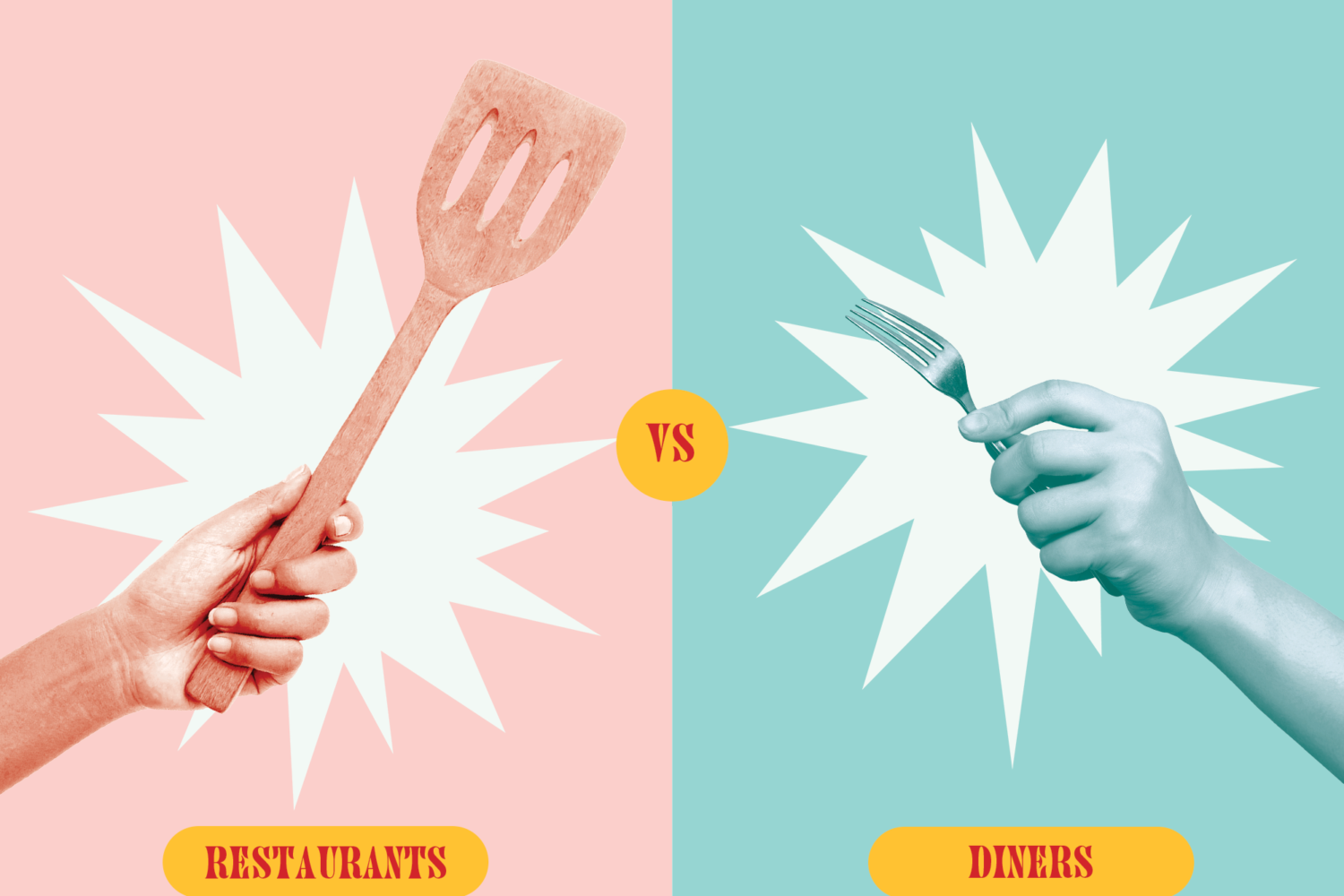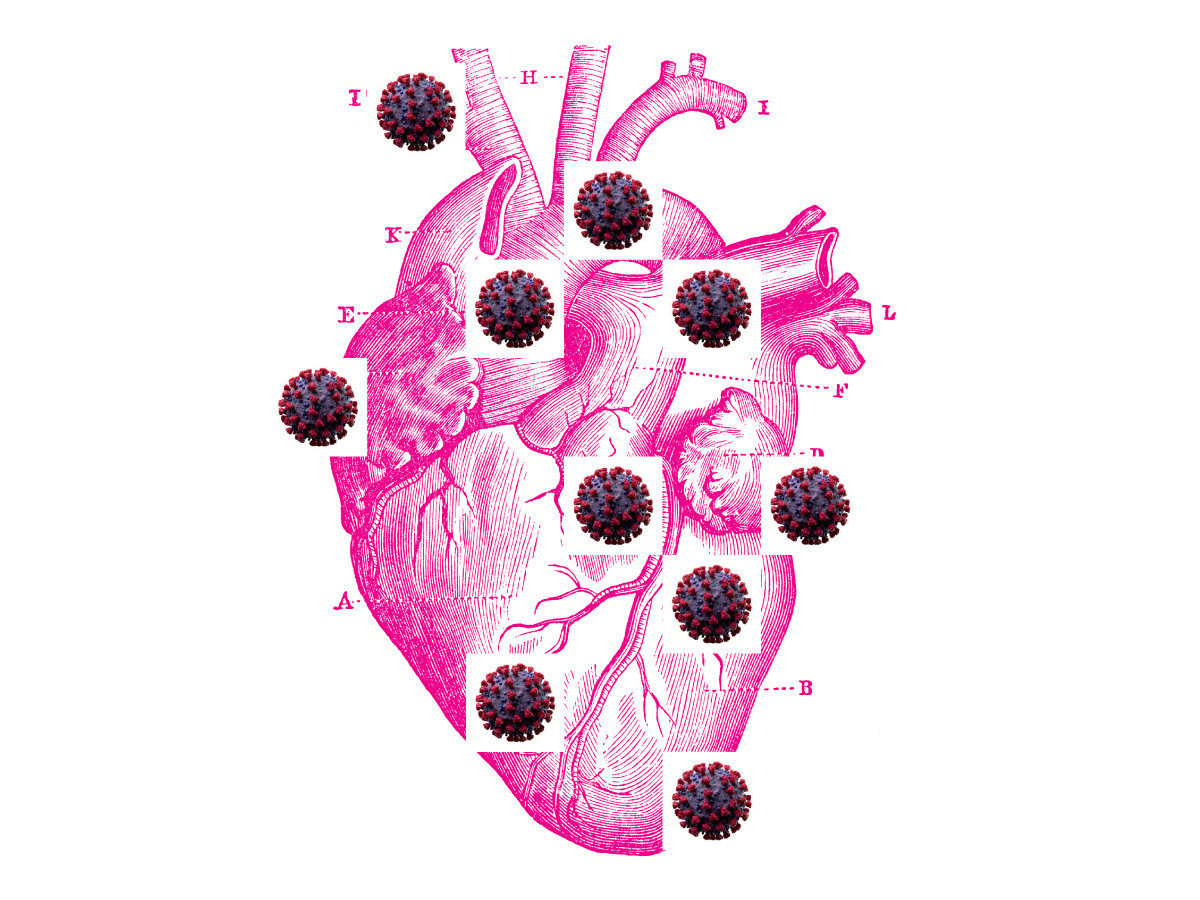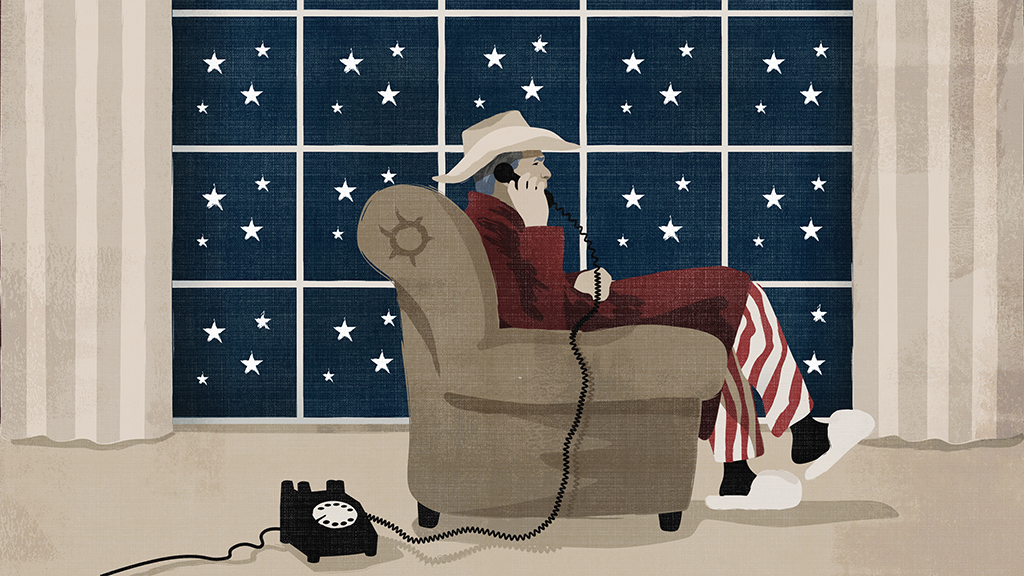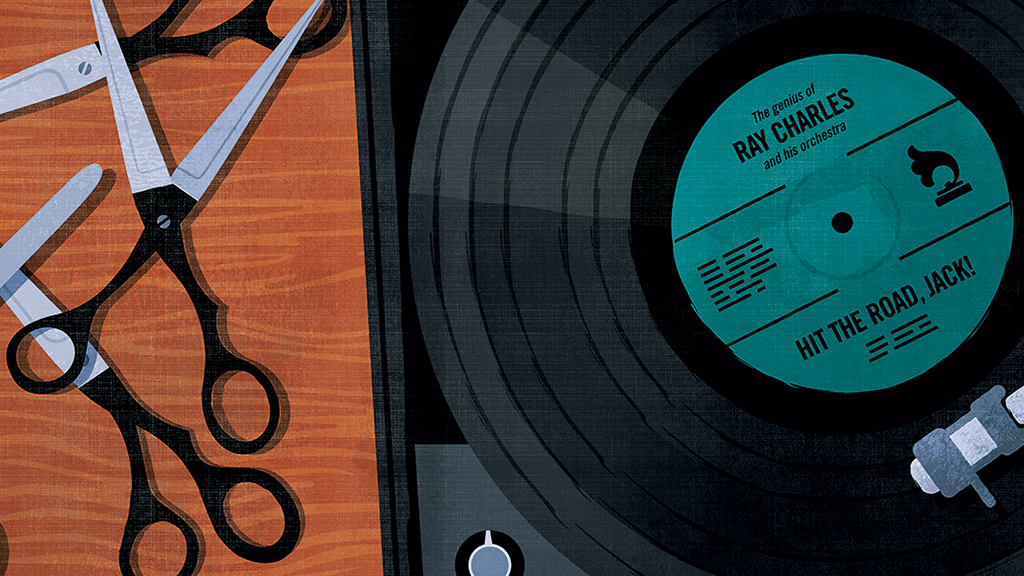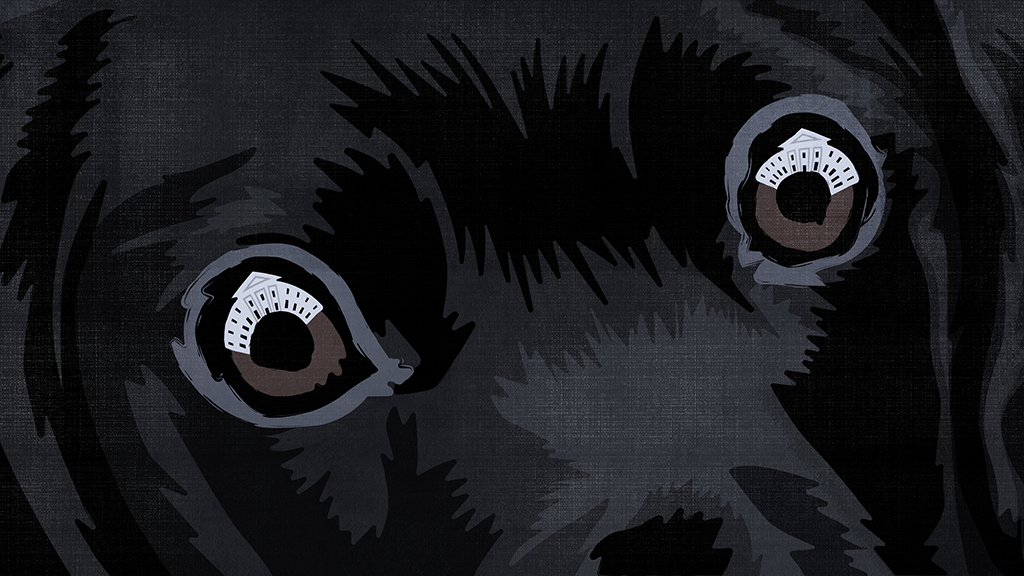About Coronavirus 2020
Washingtonian is keeping you up to date on the coronavirus around DC.
We asked Washington writers to share stories, poems, drafts, musings, and other things they’ve been working on during the pandemic. Today, an original short story by Amber Sparks, author of And I Do Not Forgive You: Stories and Other Revenges.
“I’m working on a novel,” Sparks says, “so most of my ‘writing’ right now is research—and thank God, honestly, because it’s so much easier to dig deep into the minutiae and rabbit holes than it is to use my actual imagination. But I’ve felt genuinely inspired a few times, and even productive occasionally, and it was during one of those rare times that I got the idea for this story. The depression and sadness of this moment felt like such a block to creativity that I felt haunted —and then I realized I could write a story about THAT. And that’s where this story came from.”
How to Share Your Home With a Ghost
The Ghost
The ghost lives in a home that is haunted, by her feelings of inadequacy, by all of her missed opportunities. The home is swollen with the spirits of all the lives she never lived, the chances she never took.
The ghost lives in an old brownstone, a fourth-floor walkup with only one washer and dryer in the basement. Every Tuesday, the ghost floats down the stairs, slowed slightly by the heavy laundry basket full of sad underwear and sweatshirts. The ghost almost never encounters any neighbors and slides into the wall when she hears approaching footsteps. The ghost uses generic laundry detergent and never bothers with dryer sheets. Her sheets, pillowcases, and socks are oatmeal-colored and already soft.
The ghost is a ghost like all the others: sad, lonely, prone to self-pity.
The Family
The family: a mother, an older daughter, a younger son. They are aware of the ghost, but they try not to disturb her. They avoid her whenever possible; they step around the dark, dense hole in the fabric of their home. Unlike black holes, she both repels and attracts. The small son is drawn to her sadness and thinks he would like to try it on. The mother is afraid of the ghost, but also given to sitting quietly with her on Saturday afternoons, listening to the children build their imaginary kingdoms. The daughter allows the ghost to braid her hair, but mostly she is angry at the ghost. The ghost listens in when the daughter talks to her friends. The ghost eats all of the pepperoni-and-pineapple pizza, the daughter’s favorite, though she doesn’t admit it, not out loud. She doesn’t want to make the ghost feel worse than she obviously does.
The family has explored ghost-removal solutions. The apartment is small, and it is difficult to have these discussions out of earshot. They are not, of course, quite sure how much the ghost can hear. The mother has attempted to discuss the subject with the ghost herself, but on being confronted this way, the ghost retaliated by camping out in the kitchen, reorganizing the silverware drawer, and eating all of the salted-caramel ice cream during the middle of the night.
The family has largely given up on ghost-removal and has instead focused on constructive ways to share your home with a ghost. They’ve given the ghost chores: laundry, grocery shopping, post-office duty. The ghost enjoys these tasks. Their banal sameness does not remind her of her former life, does not provoke nostalgia or regret. The fluorescent lights of each space flicker off, on, off, on; they vibrate at the same rate as the ghost’s bleached thoughts.
In return for the chores, the family sometimes takes the ghost to the playground, or to the old movie theater. The ghost likes the swings but finds the sunlight ghastly. She prefers the cool dark of the theater, the pictures not so different from the ones she once enjoyed. She lets them fill her, move through her ghostly mind, replacing the memories of her own gray life with the memories of a Technicolor world. She shares popcorn with the son, and she lets him eat the buttery pieces first.
The Haunting
The ghost is a downer ghost, not a rage ghost. She does not throw things, or harm anyone, or raise whirlwinds. She does not open doors to demon worlds. She does not manifest in terrifying forms, or grow extra heads, or have powers, or appear without warning.
The ghost does: drink the vodka, leave burnt cheese on the oven rack, pace outside of bedrooms early in the morning, leave out old photo albums, play Patsy Cline and Gram Parsons records too often, scatter toast crumbs over counters, move chess pieces, weep over the children’s baby clothes, and, occasionally, climb into bed beside the mother, a long lump under the lavender floral comforter.
The ghost, also: radiates feeling, intense, driving feeling. It surrounds her like an aura; it is strong and hungry, a sucking feeling the color of a sob.
The ghost would not call herself a haunt, except, perhaps, as a small joke. If the ghost made jokes, which she emphatically does not. The ghost would say that this is her home.
The Neighbor
A man lives next door to the haunted family. He works in finance, and like the ghost, he rarely leaves his apartment. One day, he knocks on the haunted family’s door to tell them to turn the Edith Piaf down. The door opens—though, having been solidly fastened to its hinges in 1922, it does not creak. The neighbor sees no one, only a small pile of half-folded laundry on a much-loved paisley sofa. He hears no one, only the faded treble of Edith Piaf in her later years.
Hello, he calls. Your music is too loud.
He worries the door has opened by accident, that no one has opened it. He does not think ghost, because he is a modern, if reclusive, man, analytical and logical. He thinks, no one.
He closes the door, and Edith Piaf goes mute, cut off mid-note. He heads back to his own apartment. He does not wonder; he is satisfied with the results, after all.
The next day, he does not hear any music. He sidesteps the pile of children’s tennis shoes outside the door and knocks. Once again, the door opens, silently. The neighbor sweats and steps inside. He considers himself very unfashionable and suddenly worries about what his neighbors will think of his sweater.
Hello, he says. I just wanted to say that I like Edith Piaf.
He twists the hem of his sweater. It is red, his least favorite color. The sight of blood makes him faint.
I mean, he tries again, I mean that you don’t have to turn off your music. Just down. I don’t mind noise. Your kids are so quiet. They must be well behaved. Well, then.
He turns to leave and hears her clear her throat. The ghost. She materializes in the narrow hallway near the kitchen. The kids are at school, she says. She is wearing black sweatpants and a white Champion sweatshirt. She is holding a glass of orange juice. He feels better about his sweater. The orange juice has vodka in it.
Would you like to listen to some Edith Piaf records together, he asks.
She nods. Okay. If he can see her, he can listen to records with her.
So they do. They listen to Kay Starr, and Peggy Lee, and Edith Piaf, and Billie Holiday, and they drink orange juice with vodka in it. They sit across the room from one another, so her strong gravitational pull does not affect him. She says, several times, you can see me, and he says, well, of course.
The Neighbor, Part II
It’s not what you think. There is no love story here, no pottery being made, no chains removed or souls released. The neighbor just likes mid-20th-century singers. And he is lonely. And the ghost is lonely. And they are both very unfashionable. They spend days together while the family is at school and work, listening to music, and sometimes the neighbor helps the ghost fold laundry, or go grocery shopping.
Sometimes he tells her about his own sadness, about the marriage that died and the son he lost custody of. He doesn’t know why he tells her these things; he does not know she is a ghost. He supposes it is instead his first opinion, that she is no one, the way a confessional priest can be a no one. Invisible absolution, set to the tune of “Angel Eyes.” He wears his worst sweaters. She turns down the heat because he sweats so much.
The Family, Part II
The son, as is often the case, is unhappy. He does not speak yet, not much, but mothers are quick to intuit such sadness. And so the mother is reading the son a bedtime story, and the daughter is pretending not to listen. The book is one the mother has read a thousand times, The Good Bright Stars, but this time she leaves her body and enters the little goat’s room.
She hovers over the little goat’s bed, the pink-and-red comforter draped over the bright-yellow bed frame, before coming to rest on the blue-and-yellow checked rug. She sits like a child, knees folded to her chin, and she watches the grandmother goat’s knitting needles clacking, clicking, the fireplace a garish garnet over an orange flame. She wonders, not for the first time, why the illustrator of this book had chosen the colors of the High Gothic period, flat and lurid as playing cards. Did you know, she tells the grandmother goat, that Americans introduced the joker into the playing-card deck? Isn’t that a perfect fact?
Mmm, says the grandmother goat, and the mother realizes it isn’t the grandmother at all but the ghost, and instead of knitting needles she is folding T-shirts. T-shirt after T-shirt, red and green and yellow and pink and blue, a High Gothic rainbow. You should stay in this dream forever, she tells the mother, where you can see me.
The mother wakes up, alarmed. She looks over, and the ghost is under the comforter, a familiar shapeless shape in the gauzy half-dark. The ghost is awake, though no one would know it. Her breathing is silent in the chill air.
On the weekends, everything is a ghost story. The daughter is obsessed with bones; she spends long hours watching shows about bones and blood and the human body. The mother is crying in the bathroom, silently, but she is also a tough nut to crack; she turns on the water when the ghost tries to question her. The son is hiding under his bed. He tells the ghost he is afraid of ghosts. He has placed a sock in an old #1 Mom mug, and he says it is his campfire. The mother dresses fashionably and clicks on New York Times recipes she will never make. And they call the ghost a ghost? The whole apartment is cursed on Sundays. Even the cat, Mr. Cheese, seems fixated on shadows.
How much do you know, asks the ghost of the daughter. The daughter either ignores her or cannot hear. She is hosting a tea party with Jack Skellington, Rapunzel, and Elsa. They stare at the ghost, too polite to say anything. Also, they’ve seen stranger things. The son crawls out from under the bed and kisses the ghost’s foot. The mother stops in the doorway and sees the ghost. Then she turns, and she walks to the living room, her face frozen in something like indecision.
The Haunting, Part II
Why are you so unhappy, asks the neighbor. The ghost wonders about this. There must be a clue. The ghost turns out drawers, looks under chairs and tables. She is looking for something, a solution to the mystery of how she became a ghost. She finds instead: hairpins, shampoo, cheap jewels, robot stickers, cat treats, old batteries, hotel soaps. She forgets to fold clothes. She has become, finally, a poltergeist. The neighbor leaves; this is entirely too much emotion in one room for his comfort. The ghost sits in the mess and waits for the family to come home.
The Exorcism
The mother opens the door and sees the ghost sitting in the middle of the living-room floor, surrounded by debris. She lifts the son out of the stroller. What are you doing, she asks the ghost, demands of the ghost. Why are you doing this to our family? Why don’t you just leave? The son runs to the ghost, sits in her lap. The daughter grabs the mother’s hand. The ghost begins to cry.
I want you to see me, she says. The mother looks and she looks and she sees the black pants, the hair with grown-out roots, the tired eyes, the crooked teeth. She sees the Champion sweatshirt. The mother takes the ghost’s hand. She puts her head on the ghost’s shoulder. Did you know, she says, that Champion actually made the first sweatshirts, in the ’30s? They were marketed to warehouse workers, working in freezing temperatures. It’s a perfect fact.
The daughter stares, level and serious; she stares right at the ghost. The ghost stares back. They see each other, over and over again, mother and daughter reflected back and forth in each other’s hard, sweet eyes, brown and green and gray and full of pain and love and room for another, better kind of story.




